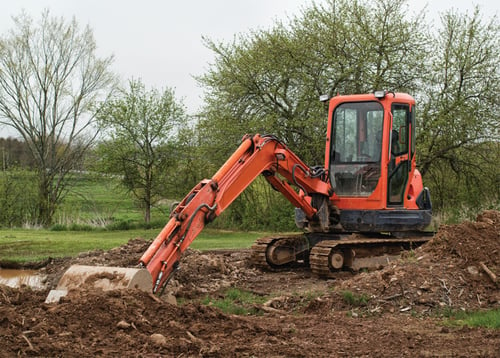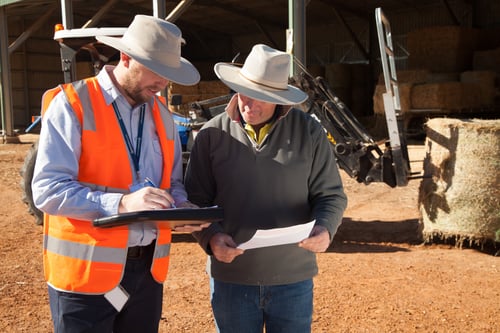Fire ants may be small, but they can pose a serious risk to your business operations.
Human-assisted movement is one of the key ways in which fire ants can spread. When people transport soil, baled materials, mulch, manure, quarry products, turf and potted plants from one place to another, the ants can hitch a ride leading to them building nests in new areas.
The construction, earthmoving, and agricultural industries are at high risk of spreading this dangerous pest, directly impacting national efforts to eliminate them.
If you move fire ants, knowingly or unknowingly, it also puts you and your business at risk. Failing to adhere to fire ant-safe practices can lead to financial penalties and legal repercussions, whilst also jeopardising your business's reputation and future tender submissions.
Recently, the National Fire Ant Eradication Program launched its Don’t spread fire ants campaign. The campaign educates people about their legal obligations when working with materials sourced from within South East Queensland’s fire ant biosecurity zones.
That’s why it is crucial for everyone working with materials that can carry fire ants to understand how fire ants spread, what fire ant biosecurity zones are, and the importance of stopping potential spread across South East Queensland and beyond.
Need compliant material transport?
Moving materials between sites? You may have stowaways!
Fire ants love organic matter and can easily hitchhike in soil, quarry products, turf, and other landscaping materials as they are transported. If you or your business handles these materials, on any scale, and they are sourced from within the fire ant biosecurity zones, you must follow the steps outlined in the Biosecurity Regulation 2016 .
There are two fire ant biosecurity zones to be aware of:
- Zone 1: covers suburbs that have undergone or are scheduled for fire ant treatment.
- Zone 2: covers suburbs that haven’t yet received fire ant treatment.
Failing to take the necessary precautions when moving materials within and between these zones can put recently treated or new areas at risk, and negatively impact the health and safety of an entire community.
A full list of suburbs within the fire ant biosecurity zones can be found here .
The National Fire Ant Eradication Program’s Head of Operations Graeme Dudgeon stresses the importance of taking responsible action for stopping the spread of fire ants.
“Illegally moving just one solitary fire ant queen to a new area could lead to the infestation of an entire community and have serious consequences,” he said.
“If you live in South East Queensland and deal with these materials, not being aware of the rules is not an excuse.”
How can fire ants directly impact you and your business?
You may be wondering what the risk of fire ants has to do with your day-to-day business operations.
For individuals and businesses not adhering to fire ant-safe practices, there can be significant consequences with substantial fines being just one of the many potential outcomes of violating your legal obligations. It is essential for those working across the earthmoving, construction, development and agricultural industries to understand the impact fire ants can have on their operations, and take the appropriate steps to prevent their spread.
Impacts on individuals and businesses can include:
Business shutdowns and penalty infringement notices
If you fail to follow the requirements, you run the risk of having a biosecurity order placed on your worksite or business operation. This can result in an immediate shutdown and prevents you from doing any work on the site until you change your work practices.
Penalty infringement notices can also be issued to individuals or businesses found to be moving materials illegally.
Compliance officers from the National Fire Ant Eradication Program conduct random checks to ensure people are following the Biosecurity Regulation 2016 .
Shutdowns will not only cost you time and reputation. You’ll also be required to pay all costs associated with changing your work practices and rectifying your mistakes. There’s also a chance you could even end up in court. There are additional long-term costs to consider too, such as lost revenue and future contracts.
Reputational damage
Failure to comply with fire ant-safe practices can damage your personal or business’s reputation. Neglecting your legal obligations in this regard could lead to a loss of confidence in your brand and make it less likely for customers and suppliers to choose to work with you.
It can also have a negative impact on an individual or business’s ability to secure future contracts and tenders in the long-term. It may also be perceived as a warning sign to potential employers and stakeholders, indicating the company is not fully committed to its responsibilities and may struggle to comply with regulations.
To ensure a positive reputation and prevent potential losses, meeting the required legal obligations is critical.
Workplace health and safety
Workplace health and safety can also be impacted if individuals are not familiar with fire ants. As their name suggests, fire ant stings are very painful and, in some instances, even life-threatening.
Anyone dealing with organic materials must understand the risks posed by fire ants, and what to do if they spot them or are stinging on the worksite.
Corporate social responsibility
Corporate and social responsibility can be questioned if an individual or business does not take their legal obligations seriously. Cutting corners and showing a lack of care for how your actions could jeopardise fire ant eradication efforts and Australia is bound to raise questions.

The role you play in stopping the spread of fire ants
Stopping fire ants in their tracks is a collective effort that requires everyone's mutual participation. To minimise the risk to you and your business, there are a range of preventative measures you can follow to remain compliant and stop the spread of fire ants, including:
Fire ant training
One way to stop the spread is through fire ant training. The National Fire Ant Eradication Program offers a range of free online training courses and resources to help individuals identify and report fire ants.
In 30 to 45 minutes, you can broaden your knowledge of fire ants and improve the safety of your business or worksite. Licensed pest managers can even be trained in how to treat fire ants by completing the online course designed specifically for their profession.
If you see something, report it
Another way to stop the spread of fire ants is to report sightings and the potential unsafe movement of materials.
- All sightings should be reported to the National Fire Ant Eradication Program within 24 hours. You can do this online at fireants.org.au or by calling 13 25 23.
- You can also report any suspected unsafe movement of materials using the all-new fire ant compliance tool. The tool empowers anyone to report wrongdoers and non-compliant practices. You can do so anonymously if you wish.
In both instances, the National Fire Ant Eradication Program will take further action if necessary. Your report is helping protect Australia from this invasive pest.
Know your obligations
Familiarise yourself with the Biosecurity Regulation 2016 requirements and stay up to date with fire ant biosecurity zones. You can do this through the fire ant compliance tool .
Failure to follow these requirements can see you run the risk of spreading fire ants across South East Queensland and even further afield.
Knowing and understanding your legal obligations can help you review and adjust your work practices to ensure you remain compliant.

Extinguish the risk of fire ants impacting you and your business
Fire ants are a significant threat to Australia, and it is crucial for those operating in the earthmoving, construction, development and agricultural industries to understand that they play a key role in stopping their spread. By adhering to the Biosecurity Regulation 2016 and following its fire ant-safe practices, individuals and businesses can remain legally compliant and you can protect your friends, family, business and our country from the consequences of fire ants.
For more information about fire ant biosecurity zones and implementing fire ant-safe practices, please visit fireants.org.au.



